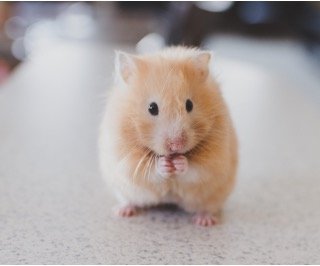Introduction
When a pet lover buys the pet, the person needs to buy their house and food source too. The most important part is their shelter. And for hamsters, it is a cage. So if you have bought a hamster and are looking for the best size of the age or what things you need to know before buying their cage, then here is the article about everything you should consider.
Overview

Hamsters are very small creatures who need very good care from their owners. Especially with their cage where they have to eat, sleep and live. Their cage should be neat and clean but their size also matters the most. Here are some important tips you should consider while buying the hamster’s cage.
-
Style of Cage
Each style of the cage has advantages and disadvantages when it comes to cleaning, ventilation, and security.
-
Ease of Cleaning
In general, a wire cage with a plastic tray is the easiest to clean; just lift the wire off the bottom, clean out the bedding, and wipe down the wire part as necessary. The more complex the cage, the more difficult it will be to clean, which is very important if you are considering a plastic cage with multiple compartments and tubes. These cages can become a real chore to clean. Aquariums are not difficult to clean but can be heavy and awkward to handle at cleaning time. Cleaning cages is not a fun task, so keeping it easy will make owning a hamster more fun.
-
Size
Aim for a minimum of 24 inches by 12 inches, and at least 12 inches tall. However, to keep your hamster active and happy, try to get a bigger cage—when it comes to hamster cages, bigger is always better.
Also, know A good name for hamsters
Some species of hamsters like Syrian hamsters need ample space to run and play, and the actual floor space of the cage is important for this. In general, many cages marketed for hamsters are too small for Syrian hamsters. Note that the tubes, compartments, and built-in wheels of plastic modular cages are too small for many Syrian hamsters.
-
Cage Security and Safety

The space between the bars on a Syrian hamster’s cage should be no more than 1/2 inch apart. Horizontal bars will allow some opportunity to climb. Check the doors on any cage to make sure they are secure, as hamsters can become quite experts at opening doors. Metal bolt clips, like those on the end of a dog leash, can be clipped on to “lock” doors for an extra level of security on wire doors. If you choose a cage with multiple levels, make sure there is no place where your hamster could fall a long distance.
How Big Should a Hamster Cage Be?
When researching what the best cage size is for hamsters, you may become overwhelmed with the divisiveness among associated animal groups when it comes to the recommended minimum cage size. Here are the recommended cage sizes from various animal welfare groups for one hamster:
- The Humane Society of the United States (HSUS): 2 square feet wire cage (576 square inches/3616 square centimeters) or 24″x12″ aquarium (288 square inches/1858 square centimeters) for all hamsters.
- American Society for the Prevention of Cruelty to Animals (ASPCA): 200 square inches/1290 square centimeters for all hamsters.
- Royal Society for the Prevention of Cruelty to Animals (RSPCA): As large as possible. No minimum was given due to lack of evidence (used to be 70cm x 40cm or 430 square inches for a dwarf hamster and 80cm x 50cm or 620 square inches for a Syrian).
Are hamsters supposed to have big cages?

Hamsters come in really tiny packages, so it may surprise you to find that they like a lot of space. In addition, they don’t want to stay together in groups and so do not require a setup for lots of pets. They do, however, want tubing, toys, a hidey-hole, and a wheel to be happy. So, your cage will need to house both your fuzzball and all her accessories (and, boy, does she like her accessories). Take all that into account when you pick out her terrarium and find the right spot for it, keeping in mind that your hamster tubes can go outside the cage as well if you feel creative.
Conclusion
Hamsters are little creatures that look adorable. They need good care along with a good place to live. And it is better to start with their cage. Their cage should be bigger and not smaller. It’s good if you keep a more than 600 inches longer cage as they will get enough space to burrow in her bedding and run their wheel. Thus, always choose the quality of bedding material and the big size of their cage.





